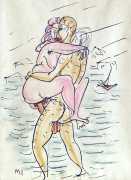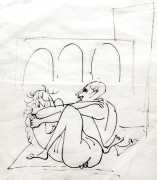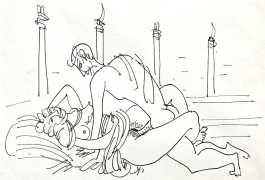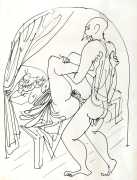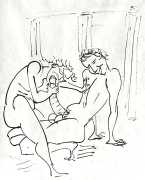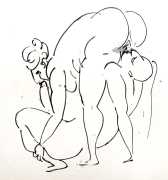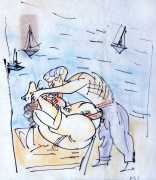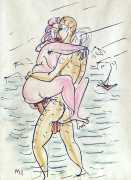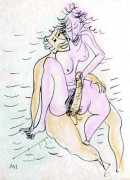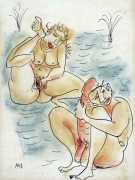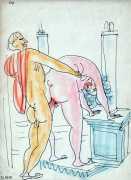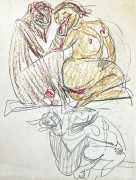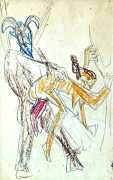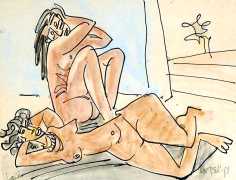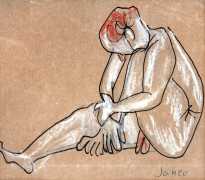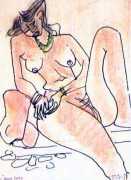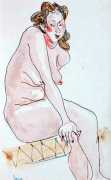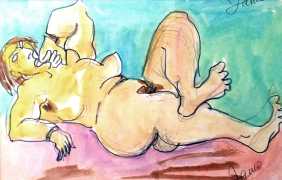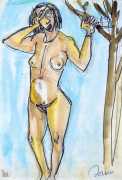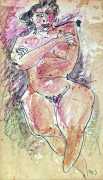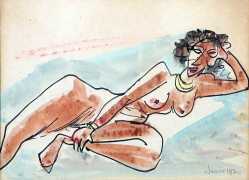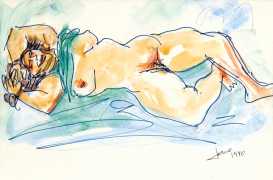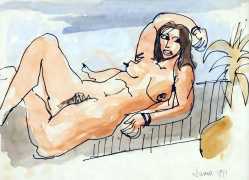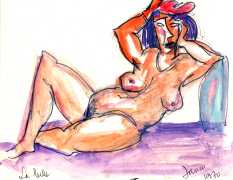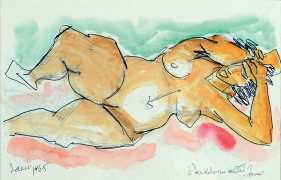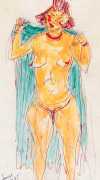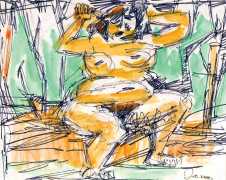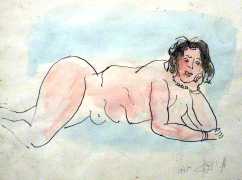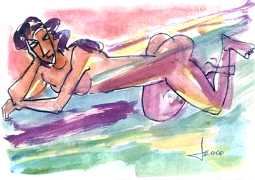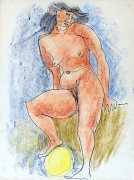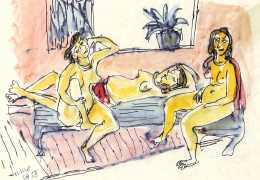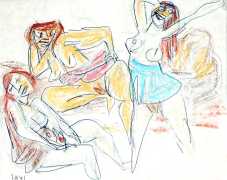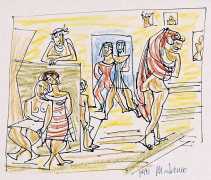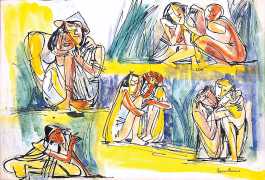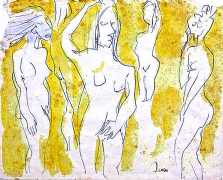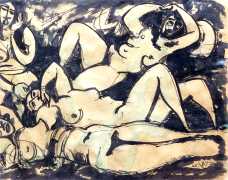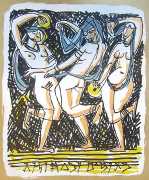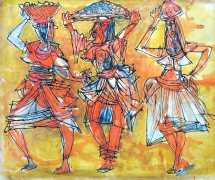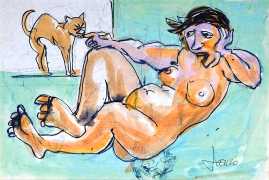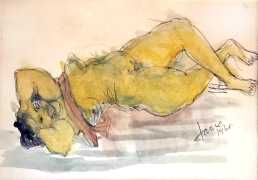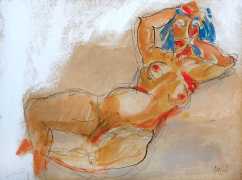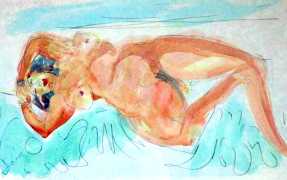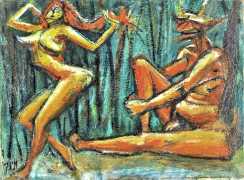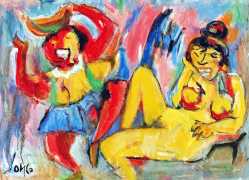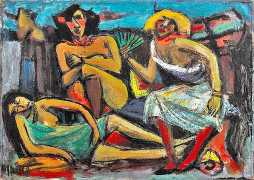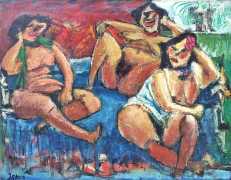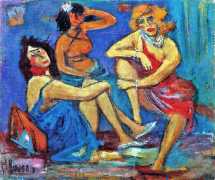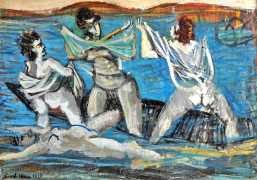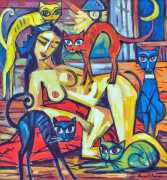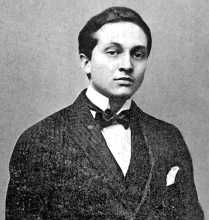 Marcel Janco (sometimes spelled as Ianco or Yanco) grew up in a Jewish family in Bucharest, the capital of Romania. A bright student, he took private piano lessons as well as drawing lessons from the artist Iosif Iser. In 1915 he began studying architecture at the Federal Polytechnic School in Zürich, Switzerland, where he took an active part in the modernist movement, the centre of activity of which was the Cabaret Voltaire. Together with other members of the movement – Hugo Ball, Hans Arp, Richard Huelsenbeck and Tristan Tzara – in 1916 Janko founded a new trend in literature and art which they named Dada.
Marcel Janco (sometimes spelled as Ianco or Yanco) grew up in a Jewish family in Bucharest, the capital of Romania. A bright student, he took private piano lessons as well as drawing lessons from the artist Iosif Iser. In 1915 he began studying architecture at the Federal Polytechnic School in Zürich, Switzerland, where he took an active part in the modernist movement, the centre of activity of which was the Cabaret Voltaire. Together with other members of the movement – Hugo Ball, Hans Arp, Richard Huelsenbeck and Tristan Tzara – in 1916 Janko founded a new trend in literature and art which they named Dada.
In 1921 Janco moved to Paris, where he tried to convince his French colleagues that Dada was a universal movement, but having largely failed he returned to Bucharest the following year. Back in Romania, he founded a modernist movement which published the magazine Contemporanul from 1922 to 1932, and his first exhibition opened in Bucharest in 1922, followed by other exhibitions both in Romania and in other countries.
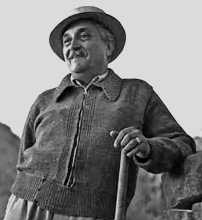 Seeking his Jewish roots, Janko made the decision to move to Israel in 1936. He first visited Palestine in 1938, and in 1941, after pogroms against Jews in Romania, he moved with his family to Tel Aviv, where he worked as an architect in the city hall and prepared scenery for the Cameri Theater. He also planned villas and participated in the planning of national parks. In 1942 the artist's works were presented at a solo exhibition in Tel Aviv. In subsequent years he participated in local exhibitions, as well as exhibitions in Venice, Paris, New York and other cities.
Seeking his Jewish roots, Janko made the decision to move to Israel in 1936. He first visited Palestine in 1938, and in 1941, after pogroms against Jews in Romania, he moved with his family to Tel Aviv, where he worked as an architect in the city hall and prepared scenery for the Cameri Theater. He also planned villas and participated in the planning of national parks. In 1942 the artist's works were presented at a solo exhibition in Tel Aviv. In subsequent years he participated in local exhibitions, as well as exhibitions in Venice, Paris, New York and other cities.
Janko was one of the founders of New Horizons, an artists’ association which included many prominent Israeli artists of that time, many of whom preferred abstract art. He devoted seventeen years of his life to teaching fine arts at the Ha-Kibutzim Seminar College. In 1953 he took the initiative to create an artists’ village, Ein Hod, at the foot of Mount Carmel south of Haifa, and settled there with a group of artists. Janko called the project ‘the final act in the spirit of Dada’. The Janco Dada Museum opened in the village in 1983.
We are very grateful to our Russian friend Yuri for introducing us to the work of this artist, and for supplying most of the images.

